Urban Planning
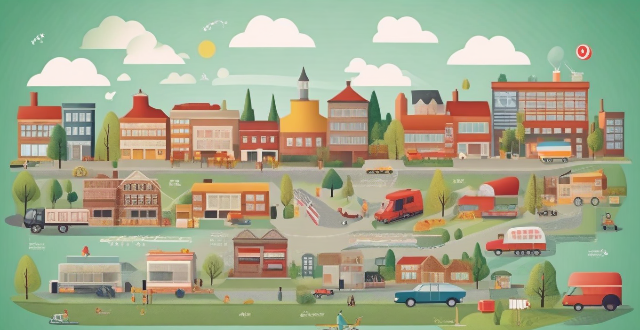
How can urban planning and design contribute to enhancing urban food security under changing climatic conditions ?
The text discusses the importance of urban planning and design in enhancing food security in cities, especially under changing climatic conditions. It outlines key strategies such as promoting urban agriculture, sustainable land use planning, improving access to healthy food options, supporting local food production and consumption, and fostering innovation and collaboration. These strategies aim to create resilient and self-sufficient urban environments that can adapt to climate change while ensuring food security for all residents.
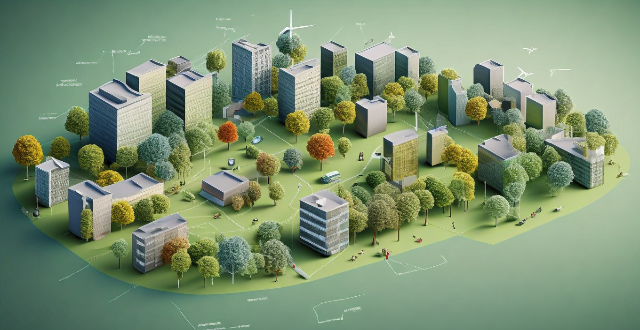
How can climate services be integrated into urban planning ?
Climate services are vital for urban planning as they provide data on climate change impacts, aiding planners in making informed adaptation and mitigation decisions. Key steps include assessing climate risks like temperature changes and extreme weather events, enhancing resilience through strategies such as green infrastructure and energy efficiency, and integrating climate services into long-term planning processes. Collaboration, data collection, public education, and monitoring are crucial for effective implementation and refining of approaches over time.
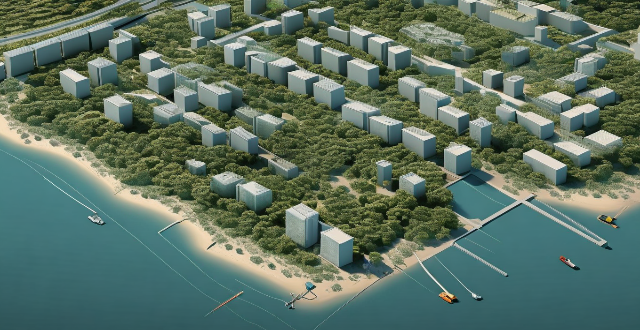
How can climate change impact urban planning ?
The article discusses the impact of climate change on urban planning, highlighting increased extreme weather events, sea level rise, urban heat islands, and energy efficiency as key challenges. It suggests measures such as elevated building standards, improved drainage systems, green infrastructure, coastal protection measures, sustainable water management practices, green roofs and walls, cool pavements, tree planting programs, energy-efficient building design, renewable energy sources, and efficient public transportation systems to mitigate these effects. The article emphasizes the importance of considering climate change in urban planning to create resilient cities and contribute to a sustainable future.
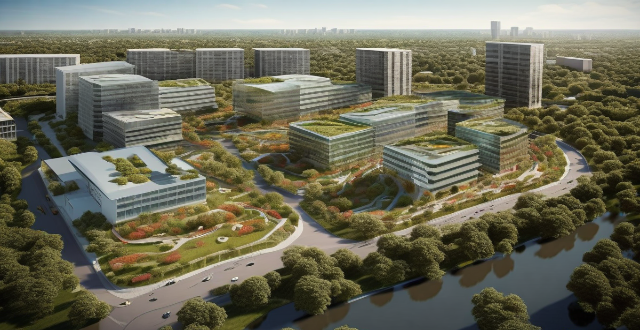
How can urban planning contribute to biodiversity conservation ?
Urban planning is crucial for managing urban growth and ensuring sustainable development. One area where it can make a significant impact is in biodiversity conservation, which is essential for maintaining ecosystem services such as pollination and water purification. Strategies for incorporating biodiversity conservation into urban planning include creating green spaces and parks, promoting sustainable transportation, implementing effective water management practices, encouraging waste reduction and recycling programs, and engaging communities in conservation efforts. By adopting these strategies, cities can become more livable while supporting both human well-being and biodiversity conservation.

How do climate predictions inform urban planning and development ?
Climate predictions are critical for urban planning and development, as they provide insights into the potential impacts of climate change on cities. This allows planners and developers to make informed decisions about infrastructure, land use, and resource management. The impact of climate change on cities includes sea level rise, extreme weather events, and air quality issues. To address these challenges, urban planning and development must focus on resilience and adaptation, mitigation strategies, and public health and well-being. Resilience and adaptation involve building resilient infrastructure, avoiding development in areas prone to climate-related hazards, and implementing green spaces to mitigate the effects of climate change. Mitigation strategies include promoting energy-efficient buildings and transportation systems, incorporating renewable energy sources, and developing technologies to capture carbon dioxide emissions. Public health and well-being can be addressed by reducing the urban heat island effect, improving air quality through regulations and clean transportation options, and ensuring access to safe drinking water. By considering climate predictions in urban planning and development, cities can become more resilient, adaptable, and sustainable in the face of a changing climate.
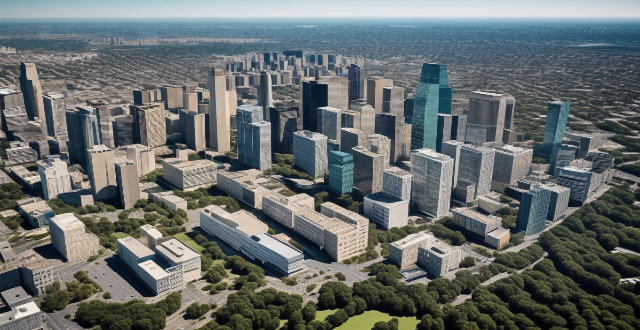
How can circular economy policies be integrated into urban planning ?
Integrating circular economy policies into urban planning is crucial for creating sustainable cities. To achieve this, cities can promote sustainable transportation, reduce waste and resource consumption, support local food production, promote green building design, and foster collaboration between stakeholders. By implementing these measures, cities can create a more sustainable environment for their residents while also reducing their impact on the planet.

How can Climate-Smart Technologies be implemented in urban planning ?
The text discusses the importance of climate-smart technologies in urban planning. It outlines various ways these technologies can be integrated into urban planning, including sustainable transportation systems, green building design, urban heat island mitigation, energy efficiency and renewable energy, water management, and community engagement and education. The text emphasizes that adopting these strategies can make cities more resilient to climate change while improving the quality of life for their residents.
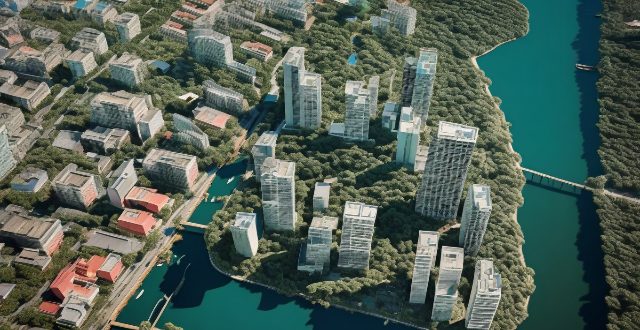
How do climate adaptation strategies differ between rural and urban areas ?
Climate adaptation strategies differ between rural and urban areas due to infrastructure, resources, community needs, and environmental impacts. Urban areas often have advanced technology and diverse stakeholders involved in adaptation planning, while rural areas rely more on local knowledge and community-based initiatives. Funding and resources are also key factors, with urban areas having better access to funding for large-scale projects and a diversified economy to support climate adaptation measures. In contrast, rural areas may have limited financial resources and dependence on agriculture, making them vulnerable to climate impacts. Community participation is crucial in both settings, but urban areas may have more platforms for participatory planning and decision-making processes, while rural areas benefit from strong community cohesion and collective action. Environmental impact considerations also vary, with urban areas facing challenges like the heat island effect and air pollution, while rural areas focus on natural resource management and watershed protection.

How does climate change influence urban planning and transportation needs ?
Climate change has a significant impact on urban planning and transportation needs, requiring cities to adapt their infrastructure, public services, and daily life accordingly. Extreme weather events such as floods, hurricanes, and heatwaves necessitate resilience and adaptability in urban planning, while sustainable development becomes increasingly important. This includes reducing carbon emissions, promoting renewable energy sources, and creating walkable, bikeable communities to reduce reliance on cars. In terms of transportation needs, the shift towards electric vehicles (EVs) requires cities to invest in charging infrastructure and encourage adoption through incentives and regulations. Improving public transit systems is crucial for reducing dependence on personal vehicles and minimizing greenhouse gas emissions from transportation. This involves expanding existing systems, improving accessibility, and investing in new technologies like autonomous buses or trains. Encouraging cycling as a means of transportation can also significantly reduce greenhouse gas emissions from cars and improve overall health outcomes for residents, requiring investments in dedicated bike lanes, parking facilities, and education programs.

How can climate risk management be integrated into urban planning and development ?
Integrating Climate Risk Management into Urban Planning and Development Climate risk management is crucial for sustainable, resilient urban development. It involves identifying, assessing, and managing climate-related risks to ensure cities' sustainability and resilience. This process requires a comprehensive approach considering factors like population growth, land use, infrastructure, and environmental protection. Here's a summary of key steps in integrating climate risk management into urban planning: 1. Identify and Assess Climate Risks: Analyze historical weather patterns, project future scenarios based on climate models, and evaluate impacts on urban areas. Key risks include extreme temperatures, precipitation changes, sea level rise, wind pattern changes, and air quality issues. 2. Develop Mitigation and Adaptation Strategies: Mitigation strategies aim to reduce greenhouse gas emissions, while adaptation strategies focus on building resilience to cope with climate change impacts. Examples include promoting energy efficiency, low-carbon transportation, green building standards, resilient infrastructure design, early warning systems, and community engagement. 3. Integrate Climate Risk Management into Urban Planning Processes: Involve all stakeholders in decision-making, establish policies and regulations prioritizing climate risk management, foster collaboration between sectors, collect and analyze data on climate risks, encourage public participation, and continuously monitor and evaluate strategies' effectiveness. 4. Examples of Successful Climate Risk Management in Urban Planning: Cities like Copenhagen (Denmark), New York City (USA), Singapore, and Curitiba (Brazil) have successfully integrated climate risk management into their urban planning processes through various initiatives such as carbon-neutral strategies, climate resilience measures, waste reduction programs, green building standards, and sustainable transportation options. By following these steps and learning from successful examples worldwide, cities can better prepare for the challenges posed by climate change and build more sustainable and resilient urban environments.
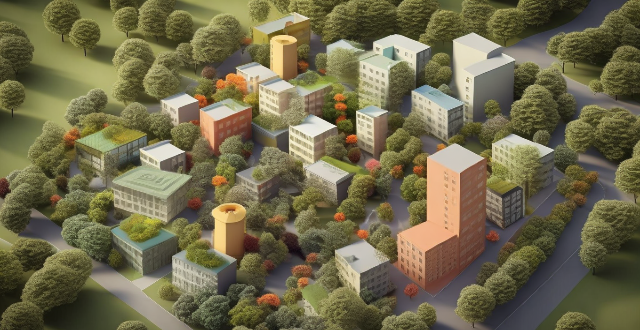
What are the key principles of ecological design in urban planning ?
Ecological design is a crucial aspect of urban planning that focuses on creating sustainable and environmentally friendly cities. It aims to integrate natural systems with human-made structures, reducing the negative impact on the environment while promoting biodiversity and enhancing the quality of life for residents. Key principles include preserving natural habitats, creating new ones, connecting them; reducing energy consumption through renewable sources; managing water efficiently; promoting non-motorized transport and reducing car dependency; supporting local food production; building resilient infrastructure; involving community in decision-making processes; promoting environmental education; and respecting cultural heritage.
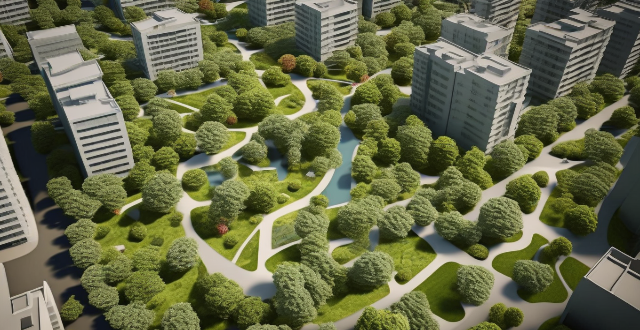
How can urban green spaces improve residents' quality of life ?
Urban green spaces, including parks and community gardens, play a key role in enhancing the quality of life for city residents by providing physical, mental, social, and environmental benefits. Physical health is improved through increased physical activity, better air quality, and mitigation of the heat island effect. Mental health benefits include stress reduction, enhanced mood, and improved cognitive function. Social well-being is boosted through community building, recreational opportunities, and educational value. Environmentally, urban green spaces contribute to biodiversity conservation, water management, and carbon sequestration. These areas are essential for comprehensive wellness in urban environments and should be a focus in future city planning.

How can climate leadership be integrated into urban planning and development ?
Integrating Climate Leadership into Urban Planning and Development: - **Introduction**: The importance of climate leadership in urban planning and development is discussed. - **Key Strategies for Integrating Climate Leadership**: Four main strategies are outlined: sustainable transportation, energy efficiency, green spaces and parks, and resilience planning. - **Sustainable Transportation**: Encourage public transportation, develop bicycle infrastructure, and promote walking to reduce carbon emissions and alleviate traffic congestion. - **Energy Efficiency**: Implement strict building codes and standards, promote renewable energy sources, and utilize smart technologies to optimize energy consumption. - **Green Spaces and Parks**: Plant trees, create community gardens, and develop waterfront areas while protecting natural habitats and ecosystems. - **Resilience Planning**: Implement flood risk management strategies, adopt wildfire prevention measures, and plan land use based on climate projections and vulnerabilities. - **Conclusion**: Integrating climate leadership into urban planning and development is crucial for creating resilient cities that can adapt to the challenges posed by climate change.

How does an integrated transportation system impact urban planning and design ?
How does an Integrated Transportation System Impact Urban Planning and Design?
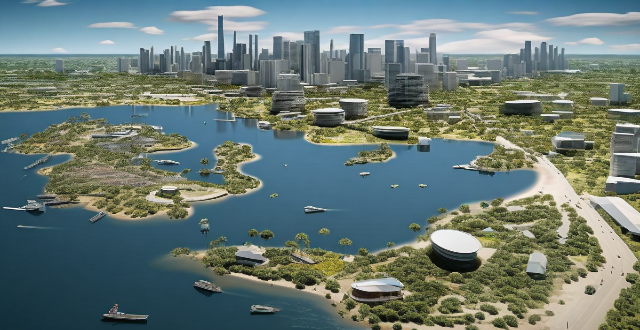
In what ways do urban heat islands influence city planning and design ?
Urban heat islands, areas within cities that are significantly warmer than surrounding rural areas, have a significant impact on city planning and design. This phenomenon is primarily due to the concentration of buildings, pavements, and other infrastructure that absorb and retain heat. The impact of urban heat islands extends beyond just temperature differences, influencing various aspects of city planning and design. These include increased energy consumption, public health concerns, water management, green spaces and landscaping, transportation planning, building materials and construction techniques, community design and zoning, climate change adaptation, and public awareness and education. Addressing these challenges requires a multifaceted approach that considers energy efficiency, public health, water management, green spaces, transportation, building materials, community design, climate change adaptation, and public awareness. By taking these factors into account, cities can become more livable, sustainable, and resilient in the face of rising temperatures.
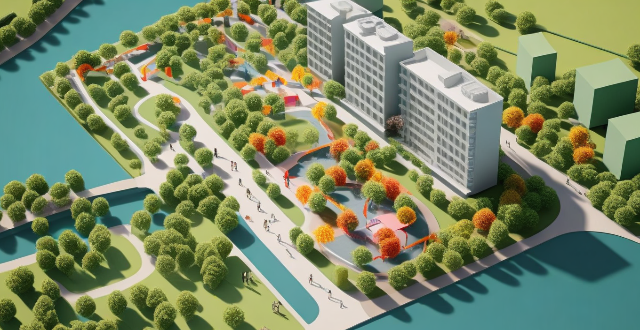
What impact does sports culture have on urban planning and infrastructure development ?
Sports culture has a significant impact on urban planning and infrastructure development, promoting accessibility, connectivity, land use planning, facility development, technology adoption, and innovation. It encourages the creation of parks and open spaces, mixed-use developments, and pedestrian-friendly environments. Sports venues require efficient transportation networks and public services such as emergency response systems and waste management facilities. The construction of sports facilities drives the development of hotels, restaurants, retail stores, and other hospitality services. Technology and innovation are also influenced by sports culture, with smart city technologies, sustainable design principles, energy efficiency measures, digital engagement tools, and data analytics being increasingly incorporated into sports facilities. As cities continue to embrace sports culture as an integral part of their identity, they must prioritize these factors when designing and implementing urban plans to create vibrant, healthy communities that benefit both residents and visitors alike.

How will urban planning adapt to the rise of autonomous vehicles ?
As autonomous vehicles (AVs) become more common, urban planning must evolve. Road design can be rethought, with fewer lanes and more space for pedestrians and cyclists. Cities can promote ridesharing by incentivizing the use of shared AVs, reducing traffic congestion and emissions from transportation. Infrastructure specifically for AVs, such as dedicated lanes and charging stations, should be built to ensure their safe and efficient operation. Smart mobility should also be promoted, encouraging the use of multiple modes of transportation. By making these changes, cities can create more efficient, sustainable, and livable environments.
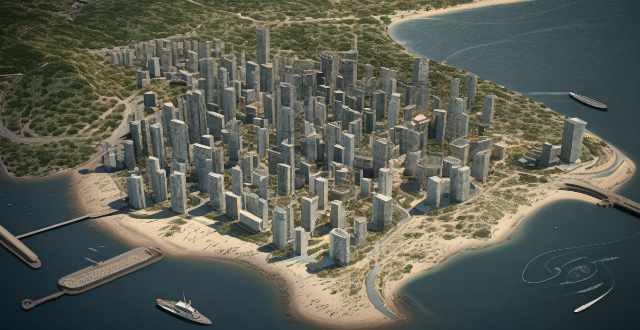
How might rising sea levels due to global warming affect coastal city planning ?
Rising sea levels pose a significant threat to coastal cities, necessitating comprehensive changes in urban planning. These changes include re-evaluating flood risk assessments, implementing coastal protection measures, updating land use planning, enhancing infrastructure resilience, and fostering community engagement. By adopting proactive planning strategies, coastal cities can mitigate the impacts of sea level rise and build more resilient communities for the future.

What are the most effective strategies for sustainable urban planning in a changing climate ?
Effective Strategies for Sustainable Urban Planning in a Changing Climate 1. Green Infrastructure: Incorporating features like urban forests, rain gardens, and green roofs to mitigate the effects of climate change. 2. Energy Efficiency and Renewable Energy: Reducing energy consumption and shifting towards renewable sources through building codes, retrofitting programs, and public transportation. 3. Water Management: Managing excess water during floods and conserving water during droughts with strategies like rainwater harvesting, permeable pavements, and water recycling. 4. Resilient Infrastructure: Ensuring cities can withstand extreme weather events by elevating buildings, designing effective stormwater systems, and implementing thermal comfort initiatives. 5. Community Engagement and Education: Encouraging resident involvement and education through workshops, citizen science programs, and promoting urban agriculture.
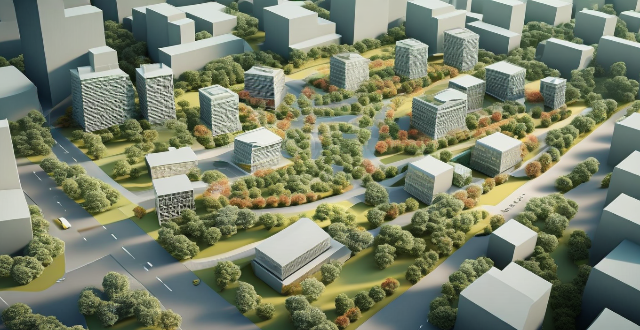
How can we prevent flooding in urban areas ?
Flooding in urban areas is a pressing issue that calls for multifaceted solutions. The strategies include enhancing infrastructure resilience through green infrastructure development, improved drainage systems, and structural flood protection measures. Risk management and early warning systems are also crucial, encompassing risk assessment, community participation, hydrological monitoring, weather forecasting technology, and public alert systems. Emergency response plans involving evacuation routes, temporary shelters, and rescue services coordination further strengthen the overall approach. A combination of structural and non-structural strategies is recommended for effective adaptation to rising flood risks. Urban planners, engineers, and policymakers must collaborate to create cities that are resilient, safe, and capable of handling climate change's uncertainties.
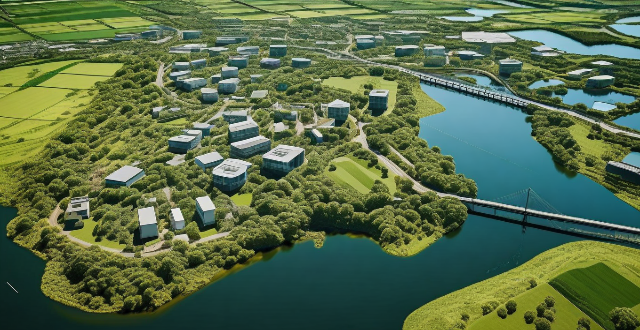
What role does urban planning play in mitigating the effects of climate change on cities ?
Urban planning is crucial for mitigating climate change impacts on cities. Key aspects include green infrastructure, energy efficiency, sustainable transportation, and resilience to extreme weather events. Green infrastructure benefits include stormwater management, air purification, and temperature regulation. Energy-efficient strategies involve building codes, public transportation, and renewable energy use. Sustainable transportation reduces emissions, improves health, and enhances livability. Resilience strategies focus on flood protection, heat island reduction, and emergency response plans. Incorporating these elements into city designs can create more sustainable environments while reducing greenhouse gas emissions and adapting to changing climate conditions.

What are the benefits of urban greening projects ?
Urban greening projects offer a multitude of benefits including improved air quality, climate regulation, water management, enhanced aesthetics and livability, mental and physical health improvements, community building, habitat creation and preservation, food production, job creation, energy conservation, and tourism attraction. These initiatives aim to increase the amount of greenery in cities, such as parks, gardens, green roofs, walls, street trees, and other forms of urban forestry. The advantages of urban greening are multifaceted and contribute significantly to the improvement of urban environments for both residents and wildlife.

What safety precautions should I take when cycling on urban routes ?
Cycling in urban areas can be a fun and efficient way to get around, but it's important to prioritize safety. Here are some key precautions to take when cycling on urban routes: 1. Wear a Helmet 2. Use Proper Lighting 3. Follow Traffic Laws 4. Be Predictable 5. Stay Alert 6. Choose the Right Route 7. Wear Reflective Clothing 8. Keep Your Bike Maintained
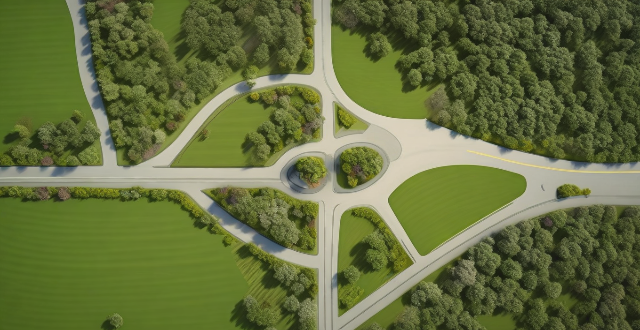
How can ecological protection areas be used as models for urban and peri-urban green spaces ?
Ecological protection areas serve as models for urban and peri-urban green spaces by emphasizing biodiversity, habitat preservation, and educational opportunities. Urban planners can apply EPA principles in designing green spaces that use native plants, natural landscapes, and green infrastructure to mimic ecological diversity. These areas should also promote biodiversity through wildlife corridors and nesting sites, engage communities with educational signage and programs, and foster partnerships with schools.
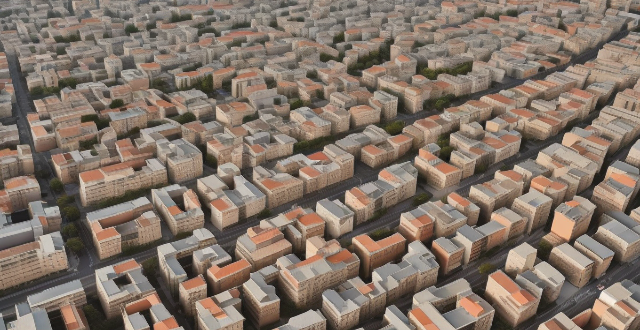
What are the top 10 cities for urban photography ?
The article provides a list of the top 10 cities for urban photography, each with its unique charm and photo opportunities. The cities include New York City, Tokyo, Paris, London, Hong Kong, Berlin, Istanbul, Chicago, Rio de Janeiro, and Melbourne. Each city is described in terms of its iconic landmarks, cultural diversity, natural beauty, historical contrasts, and architectural wonders. The article concludes that these cities offer a unique blend of urban elements that cater to various photography interests, making them ideal destinations for any urban photographer looking for their next great shot.
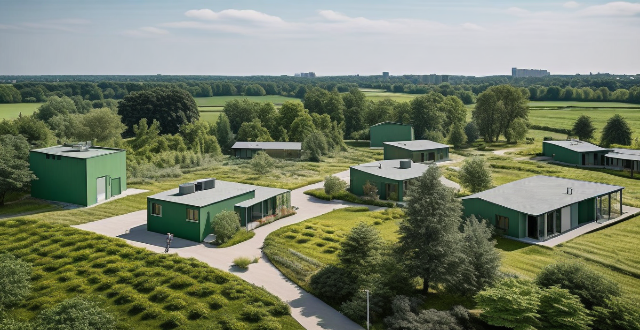
What are the economic benefits associated with urban green spaces ?
Urban green spaces provide economic benefits to cities, including increased property values, reduced air pollution, and enhanced tourism. These spaces improve the living environment, leading to higher home and rental prices, increased tax revenue, and healthcare cost savings. Additionally, they attract tourists, boosting the local economy through job creation and multiplier effects. Investing in urban green spaces is beneficial for both the environment and city prosperity.

How does urban vegetation impact air pollution levels ?
Urban vegetation, including trees, shrubs, and grasses in urban areas, plays a crucial role in mitigating air pollution. It improves air quality by reducing pollutants such as carbon dioxide (CO2), nitrogen oxides (NOx), and particulate matter (PM). Plants absorb CO2 from the atmosphere during photosynthesis, which helps to reduce the concentration of this primary greenhouse gas contributing to global warming. Trees also store carbon in their biomass, effectively removing it from the atmosphere through a process known as carbon sequestration. The large leaf surface area of urban vegetation helps to capture and reduce nitrogen oxides (NOx) in the air. When NOx comes into contact with plant leaves, it reacts with the stomata to form nitrates, which are then absorbed by the plant. Soil microorganisms play a vital role in breaking down organic matter and converting it into nutrients that plants can use. These microorganisms also help to reduce NOx levels by converting them into harmless compounds such as nitrogen gas. Urban vegetation can trap particulate matter (PM) through its leaves and bark, preventing it from being inhaled by humans and animals. This helps to reduce the health risks associated with PM exposure, such as respiratory problems and cardiovascular diseases. Trees act as wind breaks, reducing wind speed and preventing PM from becoming airborne, which helps to keep PM levels low in urban areas and improve overall air quality. In conclusion, promoting urban green spaces and encouraging the planting of more trees and shrubs in cities is essential to mitigate the negative effects of air pollution.
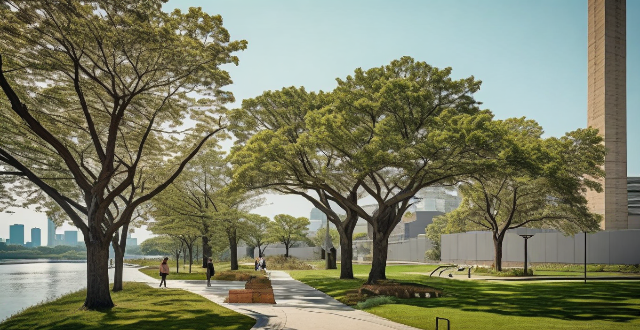
What is the importance of tree cover in urban areas ?
The text discusses the importance of tree cover in urban areas for environmental, social, and economic benefits. It highlights the role of trees in improving air quality, regulating climate, managing water, enhancing aesthetic value, building communities, reducing noise pollution, increasing property values, conserving energy, and attracting tourism. The text also suggests ways to promote tree cover in urban areas through planting initiatives, maintenance and protection, and education and awareness campaigns.

How do urban greening projects affect biodiversity in cities ?
Urban greening projects, which aim to increase the amount of vegetation within cities, can have significant effects on urban biodiversity. These projects typically involve planting trees, creating parks and green spaces, and restoring natural habitats. Here are some ways in which these initiatives can influence the variety of species living in urban areas: - Increased Habitat Availability: By adding more greenery, urban greening provides additional habitats for a wide range of organisms. This includes plants, insects, birds, and small mammals that can thrive in these newly created environments. - Mitigation of Urban Heat Islands: Vegetation helps reduce the urban heat island effect by providing shade and releasing water through transpiration, creating cooler microclimates that are more suitable for certain species. - Enhanced Food Sources: Flowering plants attract pollinators like bees and butterflies, supporting their populations and contributing to the health of the overall ecosystem. - Increased Water Quality and Availability: Green roofs and rain gardens help manage stormwater runoff, reducing pollution and providing water sources for urban wildlife. - Promotion of Biodiversity through Education and Awareness: Parks and green spaces serve as outdoor classrooms, offering opportunities for education about ecology and conservation. While urban greening projects offer numerous benefits for biodiversity, they also present challenges such as potential introduction of invasive species, maintenance requirements, and resource allocation trade-offs with other land uses.
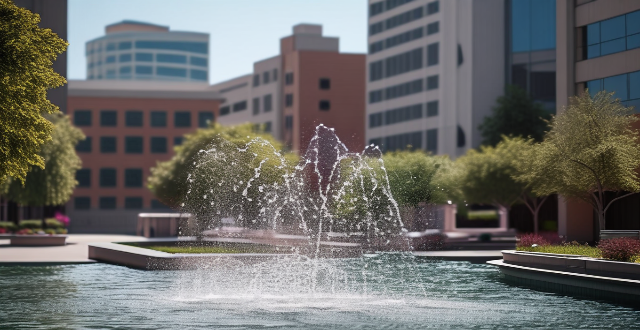
How can urban areas improve their water use efficiency and conservation efforts ?
Improving water use efficiency and conservation in urban areas requires a multifaceted approach involving technological innovations, infrastructure upgrades, public awareness campaigns, regulatory policies, and research initiatives. By implementing these strategies, urban areas can significantly reduce their overall water consumption while ensuring sustainable access to clean water for all residents.